7 Common Peace Lily Pests and Diseases + How To Prevent Them

This post follows our research editorial guidelines.

Peace Lilies (Spathiphyllum) are an elegant addition to any indoor plant collection, but not one without a few common problems. Most come from easy-to-fix issues around watering, light and humidity. From time to time however, you might have to deal with more complex problems like pest and disease. Here’s how!
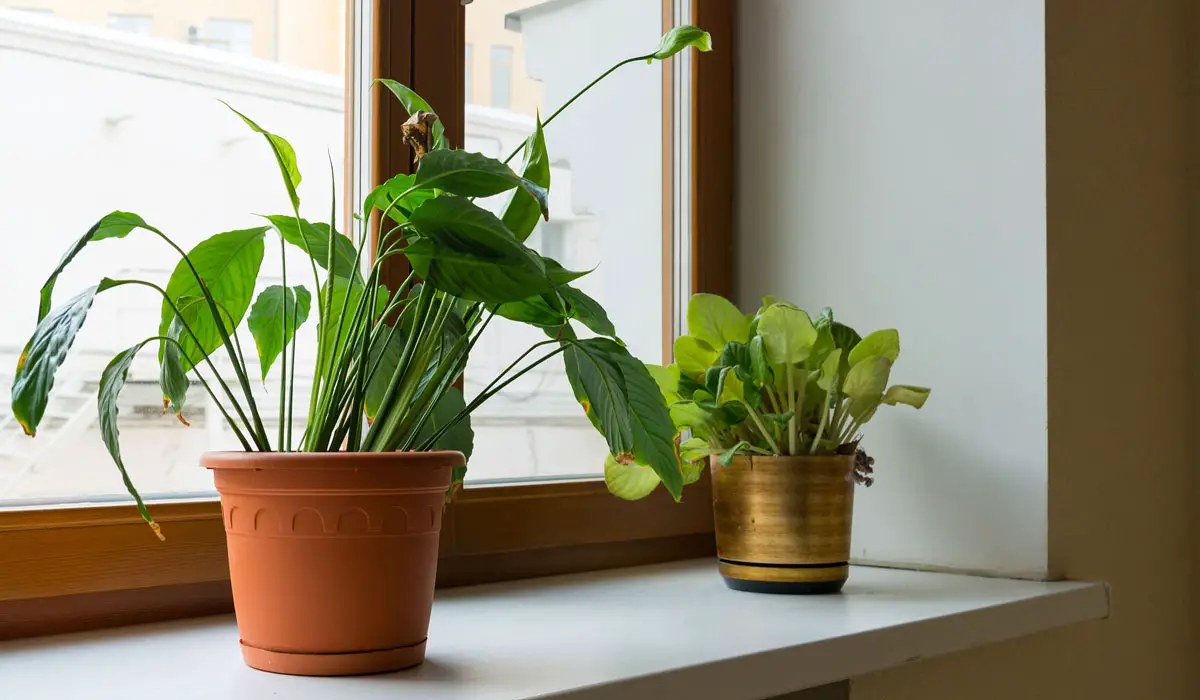
Table of Contents
What are The Most Common Peace Lily Pests and Diseases?
Common indoor pests like mealybugs, spider mites or aphids will attack Peace Lilies when an infestation is present. Poor watering practices can contribute to root disease.
Common Pests on Peace Lily Plants
Spider Mites on Peace Lilies

Spider mites are tiny little critters, no larger than the head of a pin. They’re sap suckers and will feed from any part of the plant. They hide in the undersides of leaves and puncture the veins, literally sucking the life from the plant. The most obvious sign you have spider mites is the fine silvery web they leave in their passing.
Damage from the mites themselves looks like speckles, almost a spattering of very small, delicate brown scabs. Other symptoms including wilting leaves and new growth that doesn’t properly unfurl.
Mealybugs on Peace Lilies
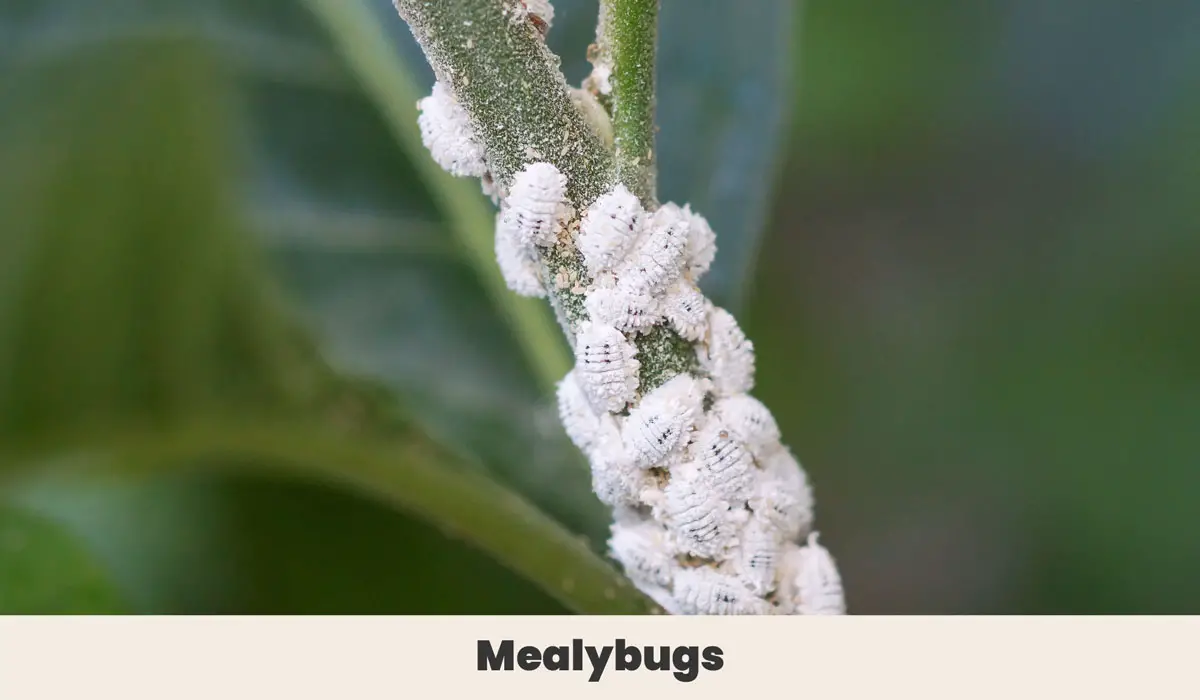
Mealybugs are small fluffy white bugs that like to cluster under leaves and at the junction of stems. They are generally white, gray or pale cream. Like spider mites, they suck sap from the leaves, but prefer to cluster around veins and stems.
Damage from these puffy vandals is more general. Growth slows to a standstill; leaves turn yellow or brown and the plant wilts.
You may also find you develop infestations of ants. Mealybugs produce a sweet, sticky substance called honeydew that ants just love to eat.
Aphids on Peace Lilies
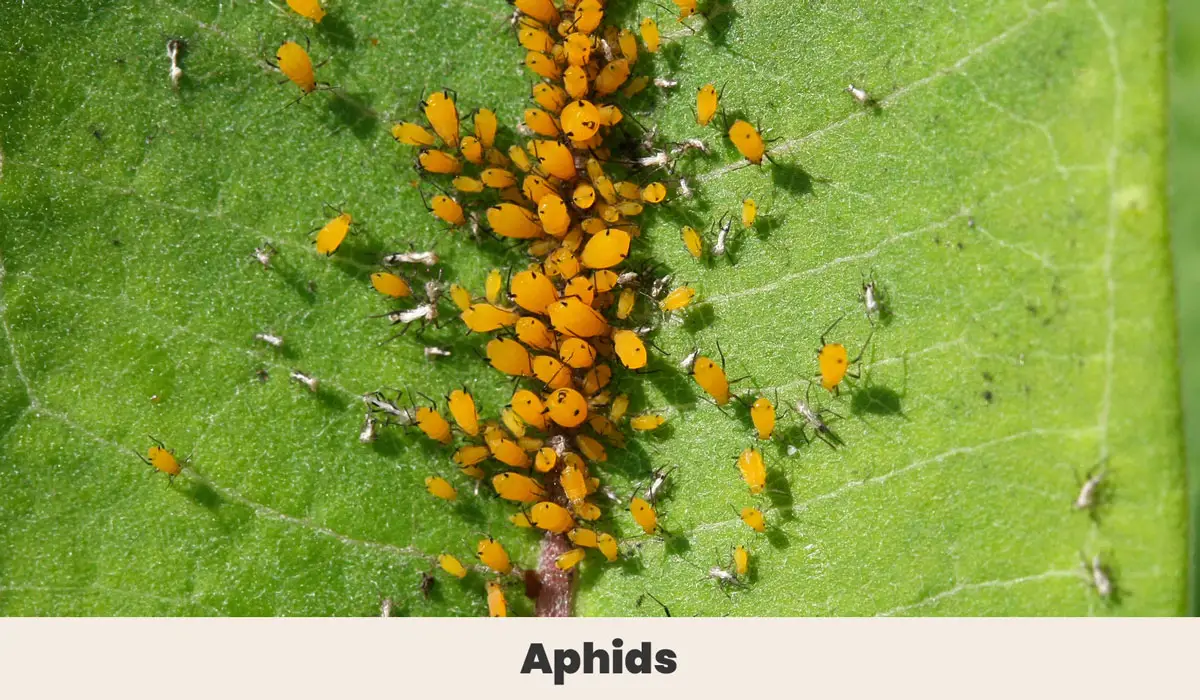
Aphids are small, sesame seed shaped insects ranging in color from bright green through to white and brown, depending on what species has set up camp on your lily. They cluster on stems and around veins, sucking sap.
Damage caused by aphids is similar to that caused by mealybugs. Young leaves are especial targets, with the bugs so effectively devouring them that new leaves never have the strength to unfurl. More established leaves yellow and curl, or wilt from the stalk. Aphids also excrete honeydew and may attract ants to your collection.
How to Remove Insect Pests from Peace Lilies
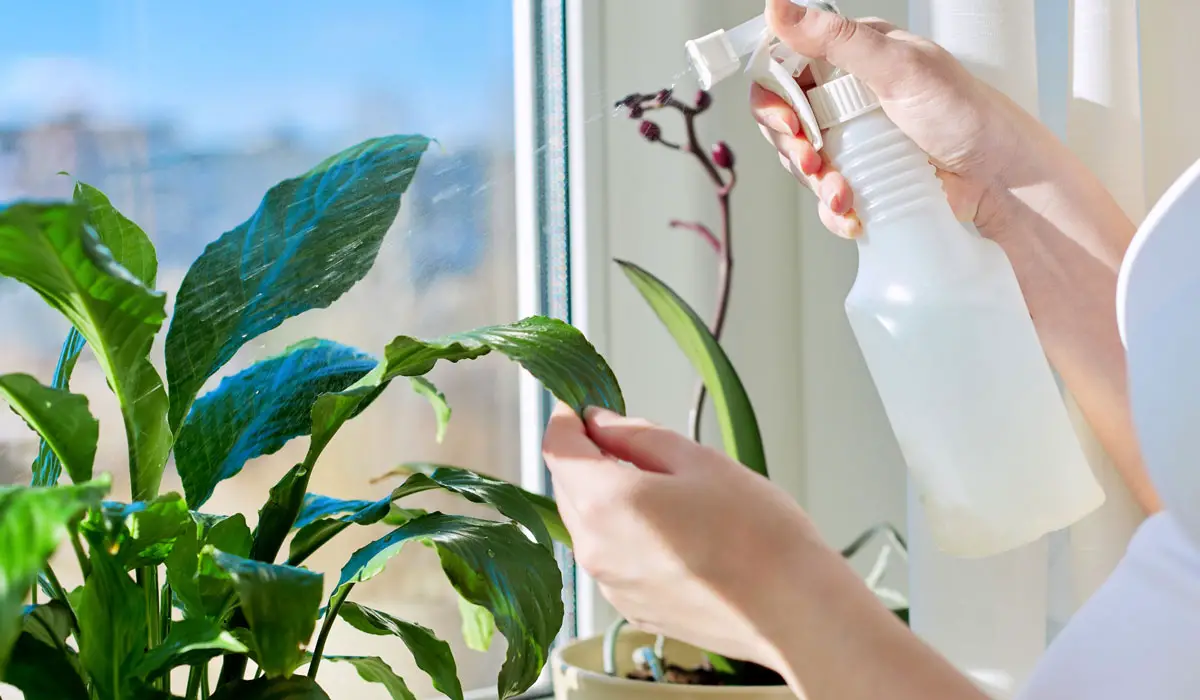
Your first act when you spot an infested peace lily is to take complete stock of your collection. The peace lily is like a flower arrangement at a buffet – nothing will eat it if there’s something better on offer. You’ll need to find all infected plants.
The next step is to physically remove the pests. Sap suckers of all types have delicate mouth parts and will quickly starve if damaged. Put your ailing plant under a shower head or hose and wash the pests from the leaves. Repeat once or twice a week to catch anything that hatches later, and be sure to allow the plant to drain thoroughly after each spa treatment. If you’ve caught it early, physical removal may well do the trick.
For more substantial infections a leaf spray may be needed. You can make your own with a few drops of castile soap in a quart of water. The properties of the soap dry out pests. You’ll need to repeat the treatment every few days until clear. It’s not a poison and won’t kill eggs or larvae in the soil.
Horticultural soaps work in exactly the same fashion as castile soap, but are more concentrated and don’t contain fragrances or the like. They’re specifically designed for plant use and are very effective. Neem oil is another leaf spray that works in a similar fashion, but also poisons the larvae. All do best when sprayed directly on the pest, though neem has a longer lasting impact.
Finally if you have a large infestation a chemical insecticide may be needed. I try to stick to ones derived from pyrethrum, a naturally occurring compound found in some flowers. This will kill your plant pests while sparing useful insects like bees.
“Before looking for a chemical solution to a pest problem on houseplants, several effective control alternatives should be considered. However, do not expect the problem to be solved with one application. Some of these alternatives require persistence on the part of the indoor gardener, but they can give good control.”
Janet McLeod Scott, Horticulture Information Specialist, Clemson University
Preventing Insect Pests on Peace Lilies
Insect pests are a pain to deal with, no matter how early you catch them. Prevention is a far better strategy.
When bringing new plants into your collection, especially from box stores, inspect leaves for pests. You can do a preventative wash with a soap solution, too, and even a basic spray down will help. Diligent collectors may quarantine new plants for up to three weeks, the typical time for all eggs in soil to hatch.
The conditions you grow in make a difference too. Almost all pests prefer dry conditions, so maintain high humidity around your peace lily. They prefer around 50% or higher, so it has the benefit of supporting leaf health too.
Finally, pests also prefer to dine on sickly plants. Provide moderate to bright, indirect light, and keep your lily warm. It also helps to water peace lilies mindfully, keeping the soil moist without allowing it to become boggy. They also do best with very low fertilization.
Root Rot Diseases of Peace Lilies
Root rot is the most likely disease you’ll experience as an indoor gardener. The most common culprits include:
Pythium:
Pythium is a water mold, found in garden soils globally. It attacks overwatered roots, causing them to rot in the soil. It spreads through contaminated soil and water. Roots decay in the soil, becoming slimy, and the outer layer sloughs off leaving a wiry core behind.
Phytopthora
Phythopthora is one of the worlds most devastating group of fungi, responsible for billions of dollars of agricultural damage each year. Roots turn brown or black, and damage can creep up the stem turning it brown and woody. Like Pythium, it transmits via infected soil and water.
How to Prevent and Treat Peace Lily Root Rot
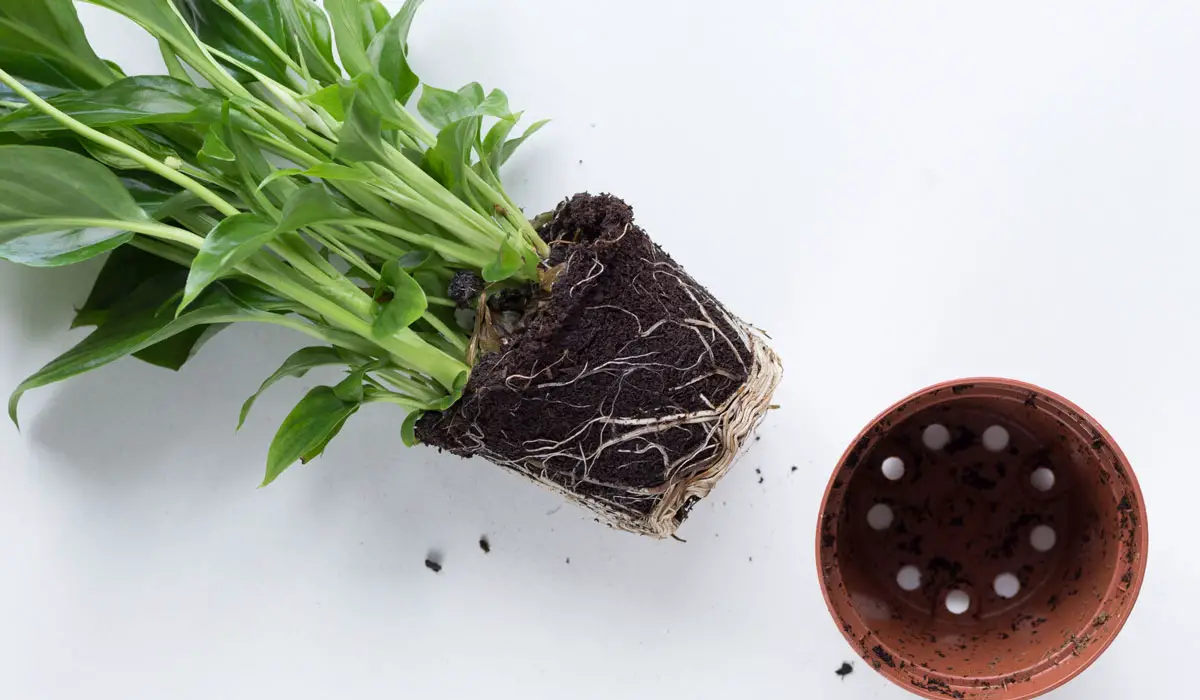
I can’t stress enough how important it is to keep your lilies watered appropriately. They need to be kept moist, in rich loamy soil that nonetheless drains well. You also need to make sure your pot is up to the task, too. They need drainage holes, and lots of them, well postioned around the outside of the pot.
To treat root rot, repot the peace lily in clean soil and a fresh pot. To do this:
- Remove the infected plant from its pot and clear infected soil. I suggest gently rinsing free the roots in a basin of lukewarm water.
- Lay the plant on a tarpaulin or sheet of newspaper and carefully trim away damaged, dying roots.
- Dust the roots with powdered cinnamon. Cinnamon contains naturally occuring compounds that kill pathogens and can promote healthy root growth.
- Repot your lily in new soil and a new pot. Lilies need rich, loamy soil with good drainage. You can mix your own from one part good quality potting mix, one part coco coir and one part perlite. Commercial soil blends designed for African violets will also be fine.
- Water your lily and allow to drain before you return it to its previous location.
Discard all infected soil or dead roots into household rubbish, and be sure to sterilize any tools used with rubbing alcohol before putting them away.
Other Common Diseases
Peace lily plants are disease resistant. There aren’t many diseases that infect them, so ‘common’ is a very relative term! Here’s a few to watch for nonetheless.
Dasheen Mosaic Virus
Dasheen Moisaic Virus is almost pretty at first. It causes a fine network of pale lines that spread from the veins of the leaf into the rest of the tissue. It’s a false beauty; those lines are necrosis and the tissue is dying. Leaves will also yellow and wilt as the disease progresses.
Cylindrocladium
Cylindrocladium typically starts at the root. If left unchecked it can cause crown rot, in which the youngest parts of the lily wilt and die. Spores in soil can move to the leaves through splashed water or mishandled soil, where it attacks the leaves and causes leaf blight.
Treating Peace Lily Disease
There’s very little treating peace lily leaf diseases. Once you have diagnosed disease, it’s over. The only recourse is palliative care – with luck, and lots of it, the lily may fight it off on its own and recover.
But most of the time, keeping a sick lily risks spreading infection to the rest of your plants. Mosiac virus is especially contagious and will attack all aroids. Given that many popular indoor plants come from the aroid family, it just isn’t worth the risk.
How to Use Pesticides & Insecticides for Peace Lily Plants
Strong chemical control is a port of last call for indoor plants. Plants grown inside share our living spaces, breathe our air and are often close to where we work and sleep. Chemical control is literally poison, and should be kept from our quarters as much as possible.
Start with low impact chemical options like neem oil or castille soap. For many pests of the peace lily, that will be more than enough.
A systemic granule is another solid choice. These work by supplying the lily with compounds it incorporates into its leaves. When pests eat the lily, they eat the poison and die. These deliver slower results but ones that are far more long lasting.
If you have to escalate to leaf sprays or drenches, use commercial pesticides designed for domestic use. Always read the instructions thoroughly and be sure to apply the product outdoors where possible, or in a very well ventilated area away from children and pets. Don’t be tempted to “double down” and add more than the label recommend – this can damage your plant.
Final Thoughts
One of the things I treasure about my peace lilies is just how sturdy they really are. For all their fussing over water and the odd brown leaf that it may produce, they pretty much laugh in the face of pests and disease. It takes a desperate bug or a persistent virus to really shake them, allowing me to enjoy their elegant leaves and stunning flowers in peace.
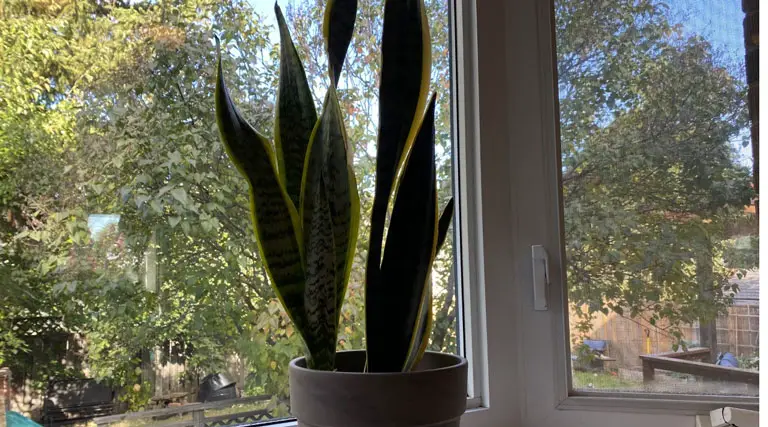
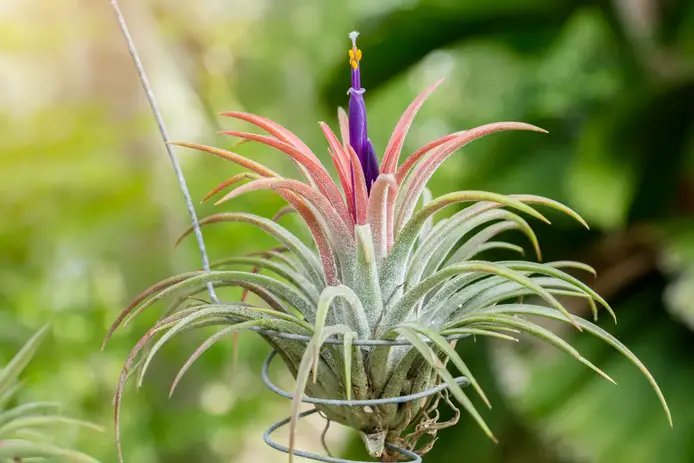
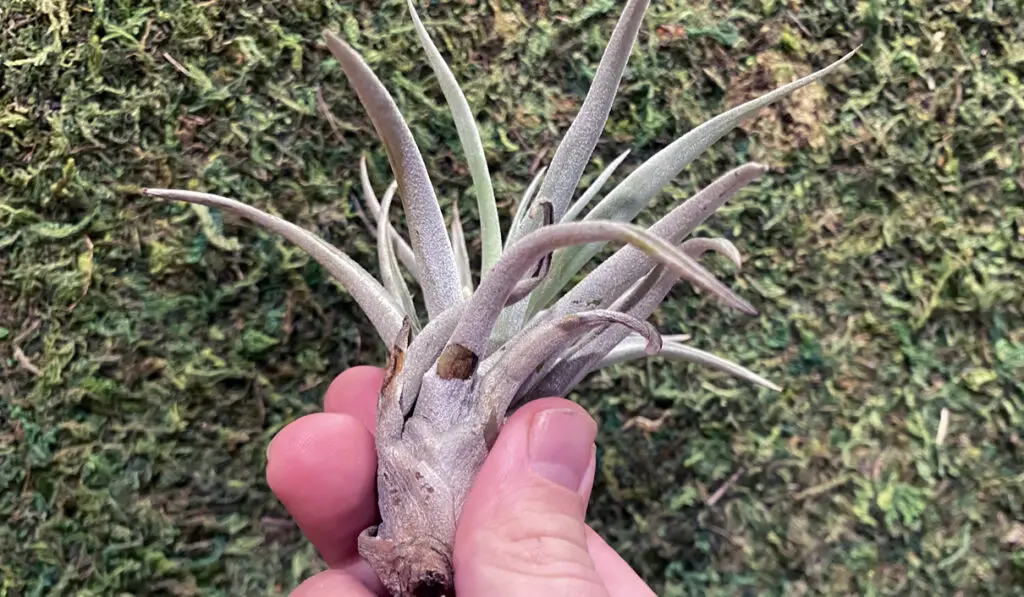
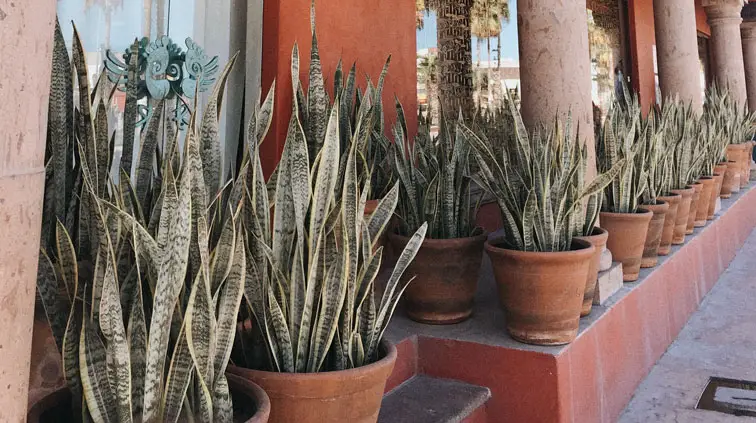

My peace lily has yellow along the edges of the leaves with brown spots in the yellow. Can you tell me what it is and how to treat it? TYVM.
Hi Sharon! It sounds like you could be under or over-watering your peace lily. When in doubt, Stick your finger about an inch into the soil—if it feels dry, it’s time to water. I hope this helps. 🙂